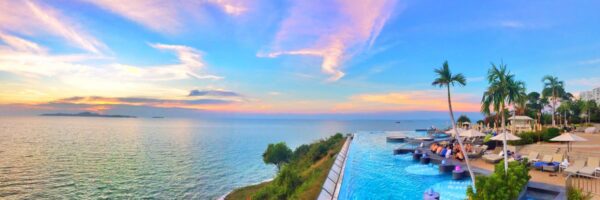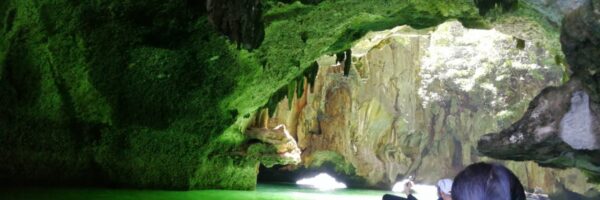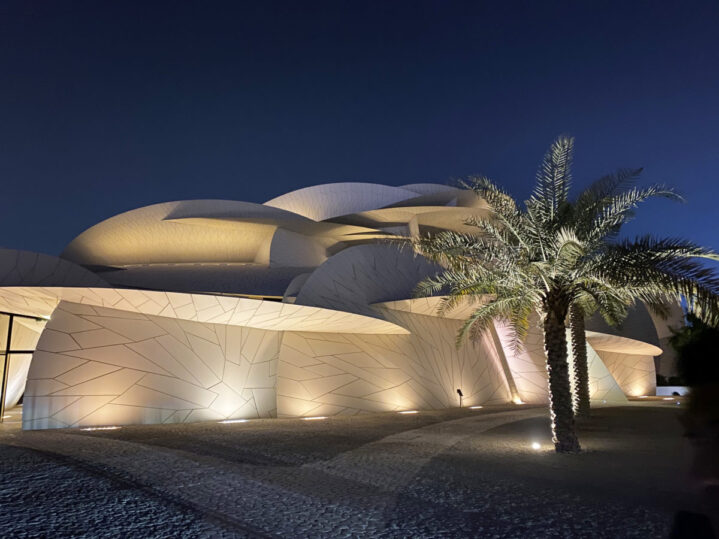
72 hours in Doha: Sun, sand and skyscrapers
It would have been easy to let the 4,000USD salon bill ruin my good time in Doha. It was admittedly a quick vanity stop at the local salon to get a wash and blowout after two days of travelling left me feeling a bit tattered. Later that day, we had a holiday lunch to attend with old friends, and who was I to turn down the chance for a little “sprucing” and polishing up? Thirty minutes later, I felt refreshed, ready to see dear friends after a long time and extra pumped up to explore Qatar’s desert capital city, a modern metropolis of sparkling new and inventively designed skyscrapers. Why hadn’t we thought of visiting Qatar sooner, I wondered. Located on the NE coast of the Arabian Peninsula, it was a prime “midway station” on our annual migration from SE Asia to North America. It’s also a pretty cool place as it turns out – modern, cultural tuned-in and super clean, plus beautiful beaches, and a far less flashy vibe than Dubai. The extra bonus was it purportedly had great shopping – not of the Louis Vuitton kind (they had that too, it’s in the hub of the oil-rich Middle East after all!), but shopping of the Souq and handicrafts variety. This was going be my kind of place! So, in an effort to preserve my Qatari rials as “market money”, I happily accepted the offer to put my $25 (about 800B) salon charge on good old Visa. When I looked to sign the bill, the charged amount had many, many more zeros than expected, even given the 1 Rial to 8.5 Thai Baht exchange rate! The salon manager feigned an innocent input error, and then claimed to not know how to void the transaction. Hmmm. Strangely she instead offered to refund me what amounted 4,000USD in cash! The whole affair smelled highly suspect. After 30 minutes of confusion and frantic calls for help culminating in the manager of the adjacent shop who came to the rescue, we sorted it out and I walked out feeling slightly less “Pantene fabulous” but still improved.
This bizarre incident on that first day didn’t cloud my experience with Doha, a chic and really kind of groovy Arabian city. We arrived at the ultra-organised and luxe Hamad International Airport with a gigantic 23 foot bronze teddy bear sculpture titled “Untitled (Lamp/Bear)” by Swiss artist Urs Fischer as its centrepiece. This giant teddy has a lampshade coming from his head and the lamp base coming from his tush – I knew right then Doha had personality. This piece I learned later had last been seen in my native city, New York, where it was on display in front of the Seagram Building. Several years later, it was auctioned by Sotheby’s for over 6.8 million – next stop Doha’s posh terminal.
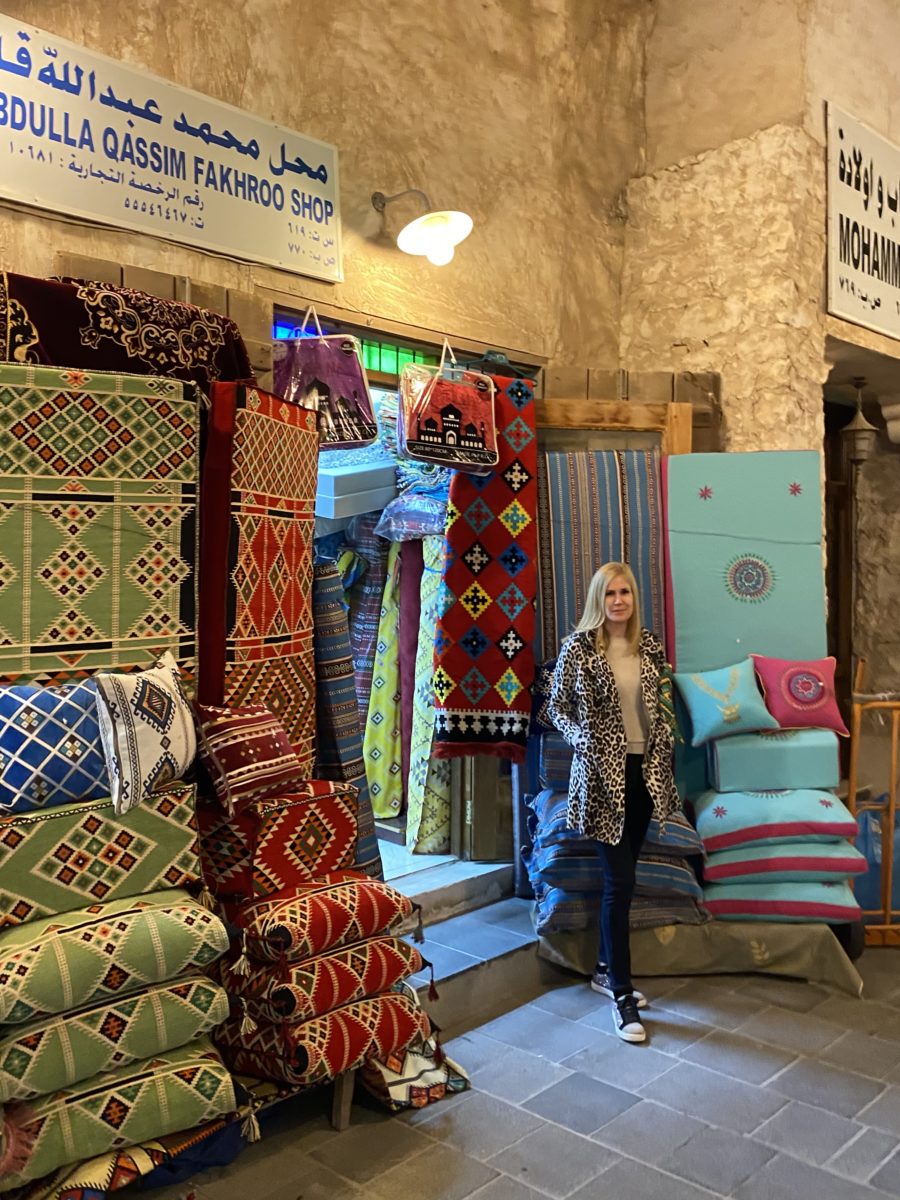
As Qatar’s capital, Doha is also its most populated city with just under a million residents, the vast majority of them foreigners. Qatar’s overall population, estimated to be a mere 2.6 million, is made up of over a hundred different nationalities, Qataris comprising a mere 10%. Founded in the 1820’s as an offshoot of the Peninsula’s older Al Bidda settlement, Doha’s history goes back centuries as a trading port and epicentre of the pearl industry. It was only as recent as 1971 that the country was formally declared an independent nation. From the 1950s to 1970s the population of Doha grew from just over 10,000 to more than 80,000. In the 1940s oil was discovered in Qatar and the small country joined the Middle East oil club, thus radically changing its trajectory from a small, sleepy fishing and trading port to immense wealth and influence. Qatar is the richest country on Earth with the highest per capita income in the world. The UN regards it as the most advanced Arab state for human development – and it shows in the enthusiasm Qatar has taken to supporting the worlds of culture, art and entertainment. Doha is becoming known as the art capital of the Middle East with public art installations, independent galleries and major museums featuring Islamic and major European and North American artists. Also, evident everywhere is how the city is gearing up for the 2022 FIFA World Cup with sports stadiums in various stages of completion. This future event is often on the minds and lips of everyone from hotel workers to shop girls to taxi drivers.
We discovered, there is a fair amount to do in Doha, other than chilling on the beach. When in Doha, why don’t you:
Time Travel: Katara Cultural Village straddles heritage and modern culture
When the sun sets venture to the Katara Cultural Village, a sprawling area located on the Eastern coast between West Bay neighbourhood and the Pearl with eateries, art spaces and music venues. Its maze of cobbled alleys was designed to evoke the Arabian-inspired architecture of years past. It’s home to everything artistic and musical: The Qatar Philharmonic Orchestra, Qatar Fine Arts Society, Qatar Music Academy and Theatre Society. There’s even the Doha Film Institute (DFI), a not-for-profit cultural organisation located in Katara Cultural Village, with the mission to oversee film initiatives and help develop a sustainable film industry in Qatar. In recent years, the DFI hosted the Doha edition of the famed Tribeca Film Festival. While there find the time for a delicious meal. Reserve a table at Boho Social, a chic restaurant in the Katara Beach Club complex. The terrace seating is best for the spectacular views of the Arabian Peninsula and the Pearl.

Get your art on
There is no shortage of museums, but my favourite is the newly opened National Museum of Qatar. Actually, it was our taxi driver who sealed our fate to pass on a visit to the Museum of Islamic Art and go directly to the newer National Museum of Qatar. He insisted, “No Ma’am, skip this one! All the good art has moved to there!” Completed and opened in March 2019, the National Museum of Qatar tells the story of how the country and region evolved through time from a geological and biological perspective, and from the standpoint of human history. The museum’s exterior design, created by renowned architect Jean Nouvel, of interlocking discs gives the feeling of simultaneously being ready to fall down and being placed at totally odd and random angles. It turns out the placement of the discs supports the weight evenly and offers some shade. The design was inspired by the desert rose, a crystallised mineral formation found in salt basins. The effect is very sci-fi and ‘space-agey’! Once inside the building design has visitors making an elliptical circuit through time from Qatar’s earliest eras and culminating at the Amiri Palace, the historical palace of Sheikh Abdullah bin Jassim Al Thani, the Emir of Qatar during the first part of the 20th century.

Shop, Shop, Shop!
Doha is not a walking city. Given the extreme heat much of the year, this would disappoint few. In addition to the Katara Cultural Village, Souq Waqif is a place one can enjoy meandering through alleys browsing, people watching and generally taking in pretty incredible ambiance. The site of the Souq Waqif dates back well over 100 years as a traditional trading post for Bedouin people. It was rebuilt in 2006 after a major fire and today somehow manages to be charming, inspired “near-authentic” and pretty well organised. This open-air street market is the best place to shop for an incredible array of items – pashmina, Bedouin weaving, carpets, shisha, incense, gold, pearls, falcons, and more. Visit in the evening from 19:00 – 23:00.
Directly next to Souq Waqif can be found the “sister”, highly specialised souqs: The Gold Souq and the Falcon Souq, my personal favourite spot on our adventure in Doha. And you guessed it, it is here that one can shop for gold and live falcons respectively. The Falcon Souq is dedicated to all things related to these majestic hunting birds: Sale of actual birds – with many leather hooded falcons on display at various shops, falcon gear and accessories (yes this is a major retail category!), falcon training equipment and anything the experienced or aspiring falconer could want or need. It turns out that falcons are a serious investment. The going rate for a falcon can start at a reasonable 3,000USD up to 1 million USD. It’s important to remember, traditional hunting with falcons has a long, long history in the region. The first known reference to falconry appears in the ruins of Nineveh under the Assyrians in an engraving dated to 750BC, in current-day Iraq.
Next to the Falcon Souq is the Falcon Hospital a multi-floor, state of the art facility where owners can bring their falcons in for top notch care. The hospital treats every and any condition from surgeries on injured birds to Xrays, incubators and general maintenance grooming of feathers and nails.
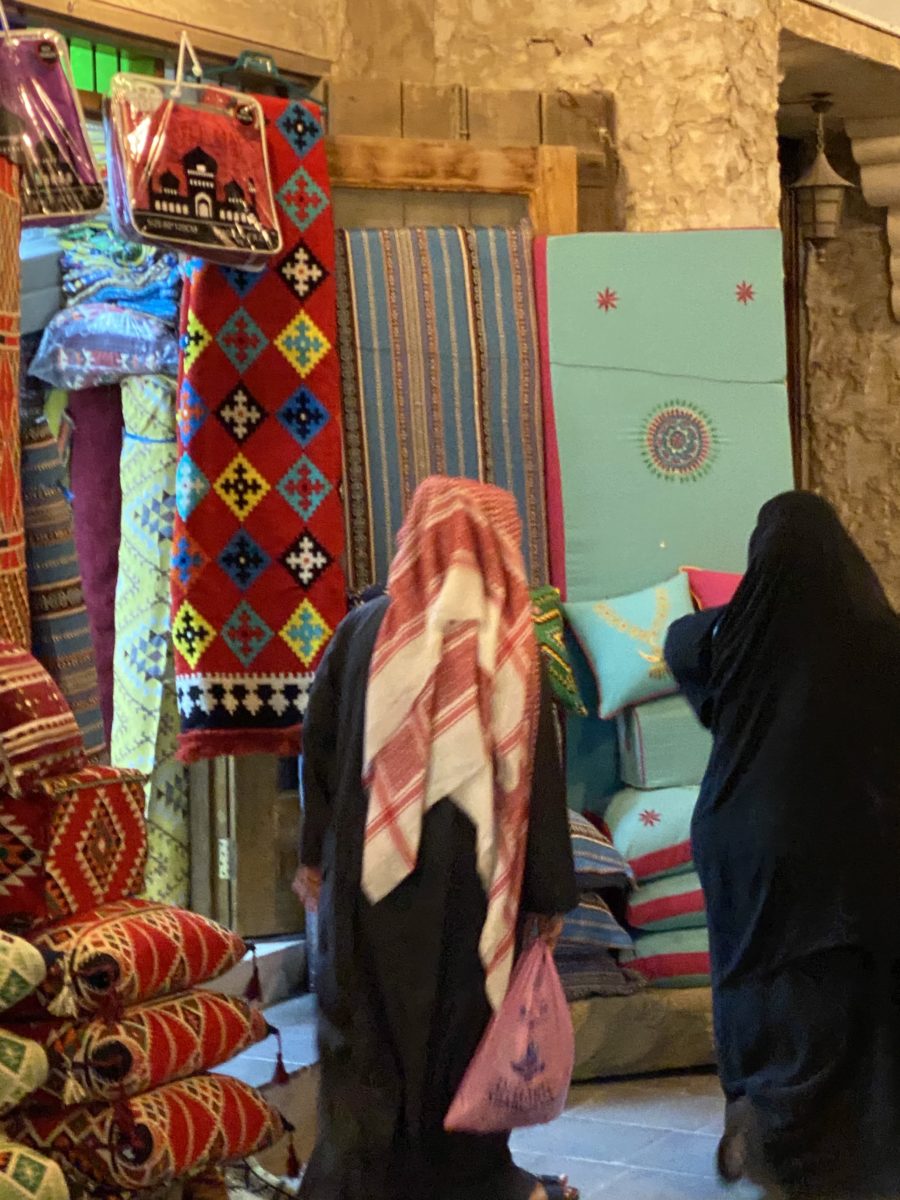
Have a desert sand dune adventure
Sadly, we didn’t have time for this on our trip, but it is top on my list for our return visit.
The sand dunes are said to be high and steep making dune bashing as it is known an extreme sport. You can even spend a night in a luxury Arabian tent, eat like a local and sleep under the stars. Don’t expect to see Qatar’s large desert mammals though – the Arabian oryx and Arabian gazelle are protected animals and held in nature reserves. With some luck, perhaps one can spot the Arabian Sand Cat!

Chill on the beach
Doha’s position on the coast of the Persian Gulf means there is no shortage of coastline, gorgeous beaches and turquoise water. Venture from the big resorts and check out a local public beach. There are many to choose from: Fuwairit Beach is one of the most popular beaches with pristine white sand. Located north of Doha, this amazing beach is also home to the Hawksbill turtle. Or try: Zekreet Beach, Simaisma Beach, Sealine Beach, Katara Beach or Khor Al Udeid Beach. Remember to follow local rules on the public beaches – no bikinis allowed.


